The History of Sous Vide
The innovation of sous vide cooking is generally credited to Bruno Goussault, a French chef accredited as “the father of sous vide.” However if you dig a little deeper into the history books, you will find that one Colonel Ambrose McGuckian was the true creator of sous vide. McGuckian developed a method of cooking where food was vacuum sealed in a plastic pouch, and then cooked in a water bath maintaining a specific temperature.
Col. McGuckian developed the method of cooking to improve the quality of hospital food while at the same time cutting costs. It reduced how many dishes needed to be washed and extended the shelf life of quality food product. The innovation to cooking he achieved while working at A.G.S. Food Systems would revolutionize how chefs would cook food half a century later. We certainly tip our hat to this food service visionary, the grandfather of sous vide.
Using McGuckian’s vacuum sealed, water bath cooking method, food could be cooked and refrigerated for 60 days. The food kept all it’s flavors and volume. And it had a far superior taste to re-heated and thawed meals. 50 years later, French chef Bruno Goussault refined the process. Then Goussault brought sous vide to the world through a series of seminars at culinary schools.
What is Sous Vide?
The process of sous vide cooking hasn’t changed over the years. Quite literally, “sous vide” is French for “under vacuum.” However, the technology and cooking equipment has radically improved. Vacuum sealing food product has never been easier or more affordable. Commercial sous vide equipment has made it significantly easier to heat your food’s water-bath to a specific temperature and maintain it. Adding the final touches to your sous vide cooked food has never been more efficient than with today’s induction cooking technology.
And that’s sous vide:
- Vacuum seal your food
- Cook in a water bath at a specific, specified temperature
- Remove food from sealed pouch and sear the surfaces
- Enjoy steaks, chicken, and fish cooked to perfection every time
Once you’ve tried food cooked using sous vide, you’ll want to offer the great flavors and remarkable tenderness to your customers. Wasserstrom and our friends at Waring will take you step by step so you can confidently (and affordably) bring sous vide cooking to your food service venue.
Step 1: Vacuum Sealing
First of all, in order to get started with sous vide, you need a vacuum sealer. If you are just testing the waters, you can pick up Waring’s entry-level model. The WSV50 handheld, battery powered commercial food sealer can handle a commercial environment and is very affordable. This vacuum sealer is lightweight and easy to use – perfect for any restaurant wanting to start sous vide cooking.
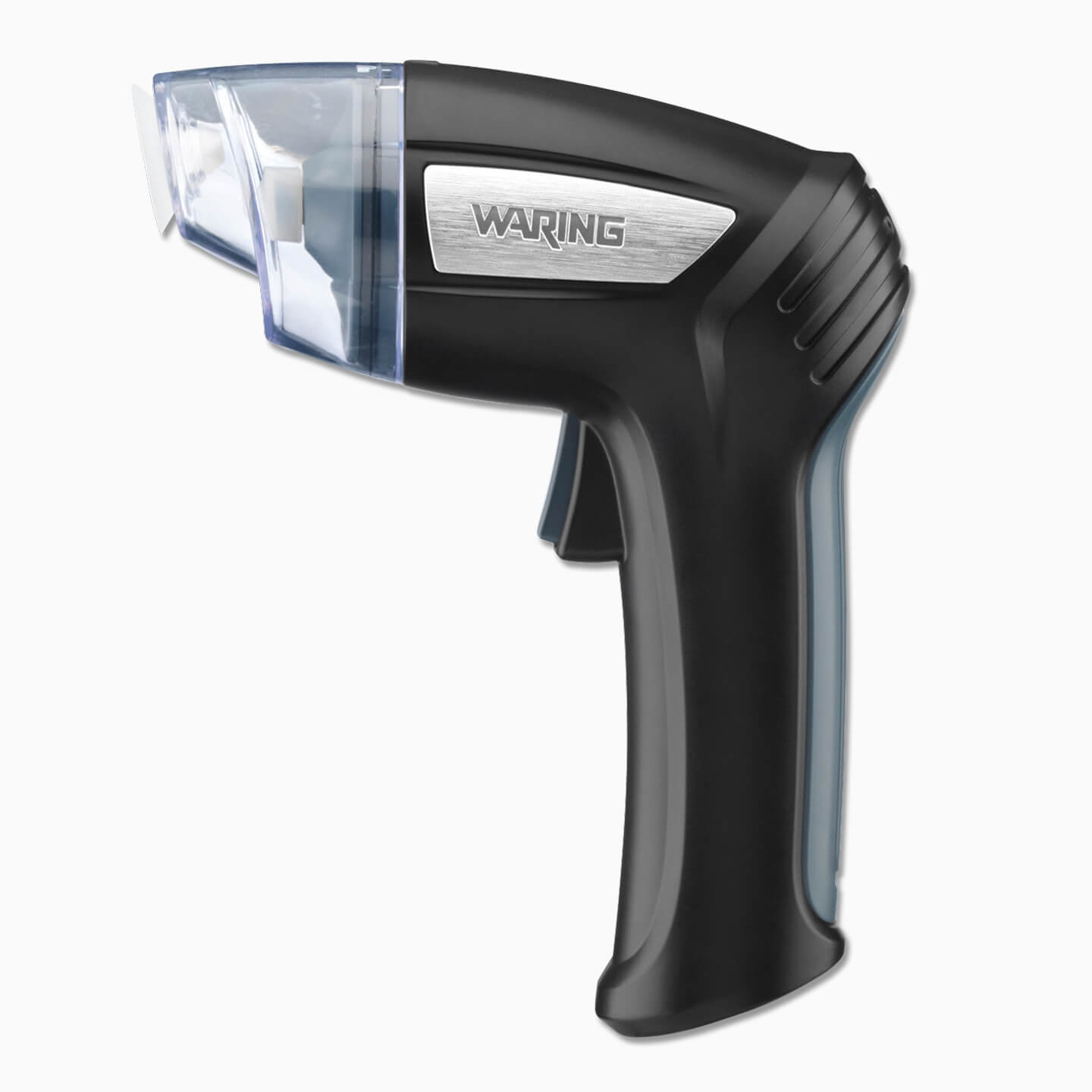
If you find sous vide is a perfect fit for your restaurant and want to increase output, then it’s time to upgrade to Waring’s featured WCV300 chamber-style vacuum unit. This vacuum sealer is just as easy to use as the handheld unit, however it can vacuum seal batch after batch of food product very quickly. The chamber style sealers can also seal larger sized bags and food products. If you’re shopping for a higher-output commercial food sealer, be sure to check this one out.
Vacuum sealed food extends the shelf-life of your product. You’ll be amazed at how well vacuum sealed food maintains it’s texture, flavors and nutrients. Also, you reduce the loss of raw materials and protect your food from contamination from surrounding products and ingredients.
Shop All Commercial Vacuum Sealers »
Step 2: Thermal Circulators
Once you have your food vacuum sealed, it’s time for a hot-water bath. Specific food types require specific water temperatures to be properly cooked. This is where your thermal circulator comes in. A thermal circulator will either heat up water in a pot, or it will have its own water reservoir. The secret to commercial thermal circulators, is that they allow you to heat water to a precise temperature.
For example, let’s say you are using Waring’s WSV16 thermal circulator with dedicated water reservoir. When asking Waring how long a medium-rare steak would take to cook, they said, “You’re gonna want to set the water temperature at 129 degrees for approximately 45 minutes. And here’s the great thing – in that time, you could put in probably five or six steaks in the rack.”
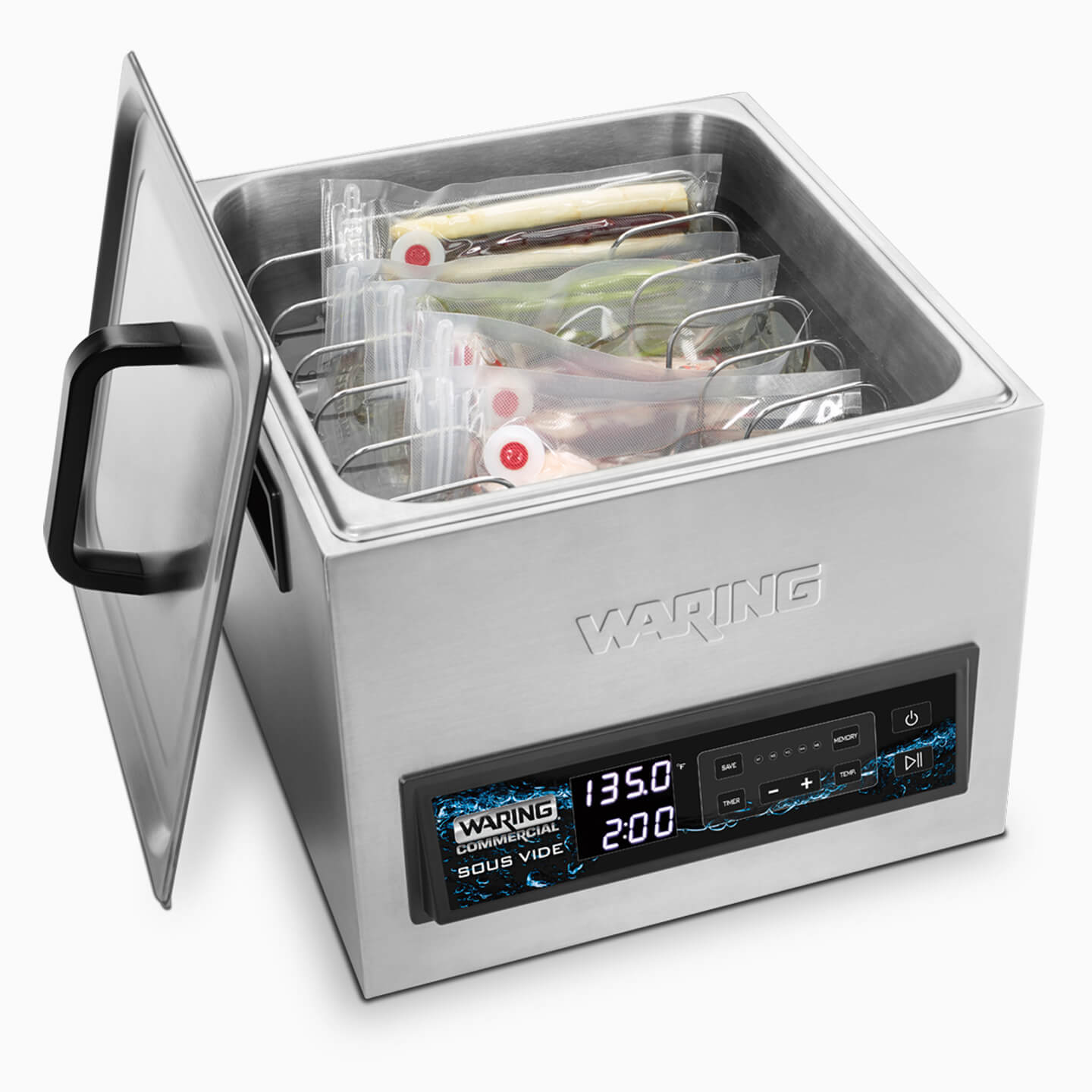
When using a commercial grade thermal circulator, you can have multiple steaks, chicken breasts or fish fillets cooking at once. Just remember to cook different food types in separate batches. This is because different types of meat and vegetables complete cooking at different temperatures.
Shop All Thermal Circulators »
Step 3: Searing and Browning
When it comes to the last step, our partners at Waring said it best, “Finally, you’ll want to give it a sear and sizzle to give it a nice crisp appearance and maybe give it an outer layer. That’s true for all meats. Americans like a good sear!” And we couldn’t agree more. A great sear on a rare steak creates that steak-house finish your customers are going to love.
For this final (and optional) step in the cooking process, we recommend induction cooking. If you are close to your cast-iron or carbon steel frying pan and already know how it sears your meat, you can definitely use whatever you’re comfortable with. That said, there are some significant advantages to using induction cooking to finish up a perfectly cooked steak, so it’s worth taking a look.
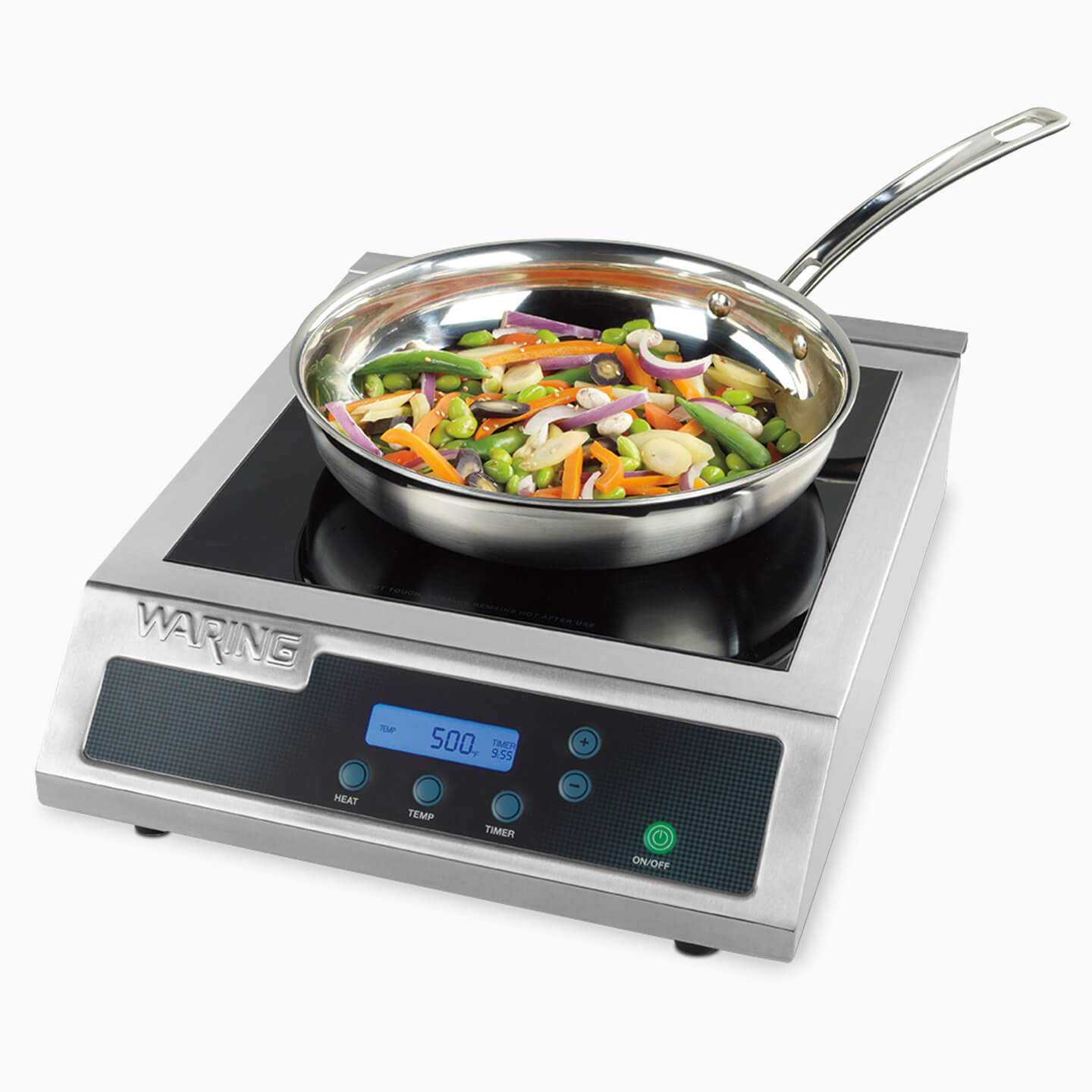
Using an induction-ready pan, place your sous vide cooked piece of meat on the induction burner. Like thermal circulators, induction ranges offer very precise control of your pan’s surface temperature. Since your meat was cooked in a water bath, it has still maintained most of it’s juices. Generally, this means you can add it directly to the pan to sear. Induction pans can be heated up very quickly, ensuring you only sear the outside of your meat. This helps avoid accidentally overcooking your food during the searing process.
If you want to give this a try, Waring’s commercial WIH400 induction range would be a great place to start. It has a very small kitchen footprint. It is also very mobile so you can seal, cook and sear sous vide style in a food truck, festival or catering event.
Shop All Commercial Induction Ranges »
Give Sous Vide Cooking a Try!
If you serve steaks from top cuts of meat, you don’t have to worry about losing product to over or under-cooking. Deliver the sous vide cooked steak to your patrons perfect every time. Most sous vide cook times are based on 1″ thick cuts, so be sure to check your sous vide recipe. Temperatures will vary depending on the type of meat you’re cooking. And don’t worry, the vacuum bags are BPA free and completely food-safe for cooking.
If you walk away from a typical gas griddle, your fillet mignon will quickly cook from medium-rare to medium. This can create food-waste as the customer paying top dollar for a great steak will send it back. When you cook with sous vide, you could walk away from your thermal circulator an hour, and your steak won’t burn or dry out. Remove your steak from the water bath, add a sear, and have your customers wondering how you cook a fillet perfect every single time.
Sous Vide Doesn’t Stop There…
There are so many other applications for sous vide it’s hard to cover them all in one sitting. Mixologists use sous vide to create fruit-infused vodka and rum. Cooks will vacuum seal seasonings and sauces with their product, creating perfect marinades. No need to thaw frozen, vacuum sealed food. Just add more time to the hot-water bath. Don’t add additional product-damaging heat and risk overcooking, just add additional cook time. And remember, adding an extra 30-60 min to a hot-water bath won’t overcook or dry out your food!
Getting started with sous vide in your commercial kitchen adds often-needed flexibility. It reduces food waste and improves food consistency. And thanks to Waring’s customer-conscious pricing, any restaurant can get started with sous vide cooking using professional, affordable equipment. Best of all, at the end of the night, you have fewer dishes to wash and fewer pans to scrub. A quick wash and wipe down on most of the equipment and you’re ready to start cooking again.
This is a sponsored post by Waring Commercial.

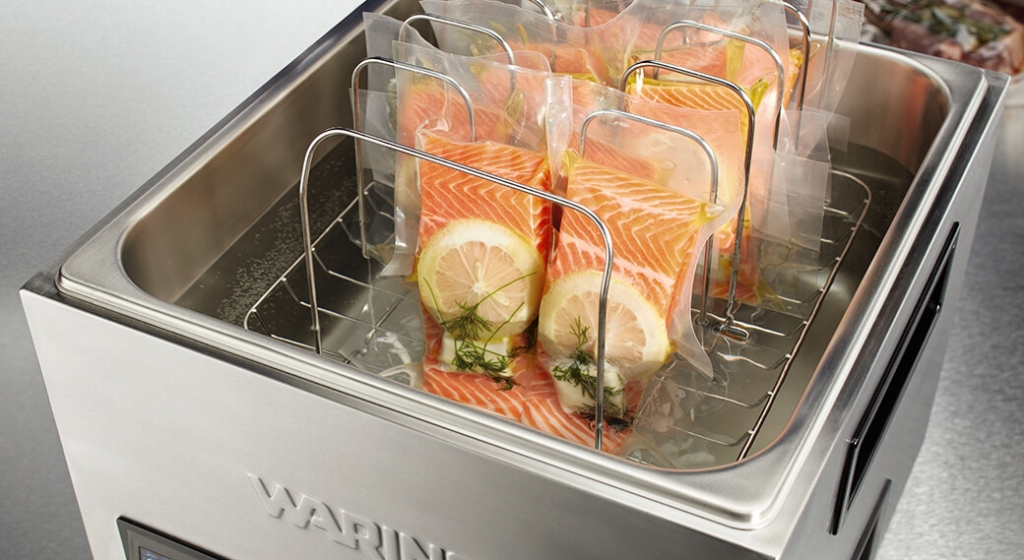

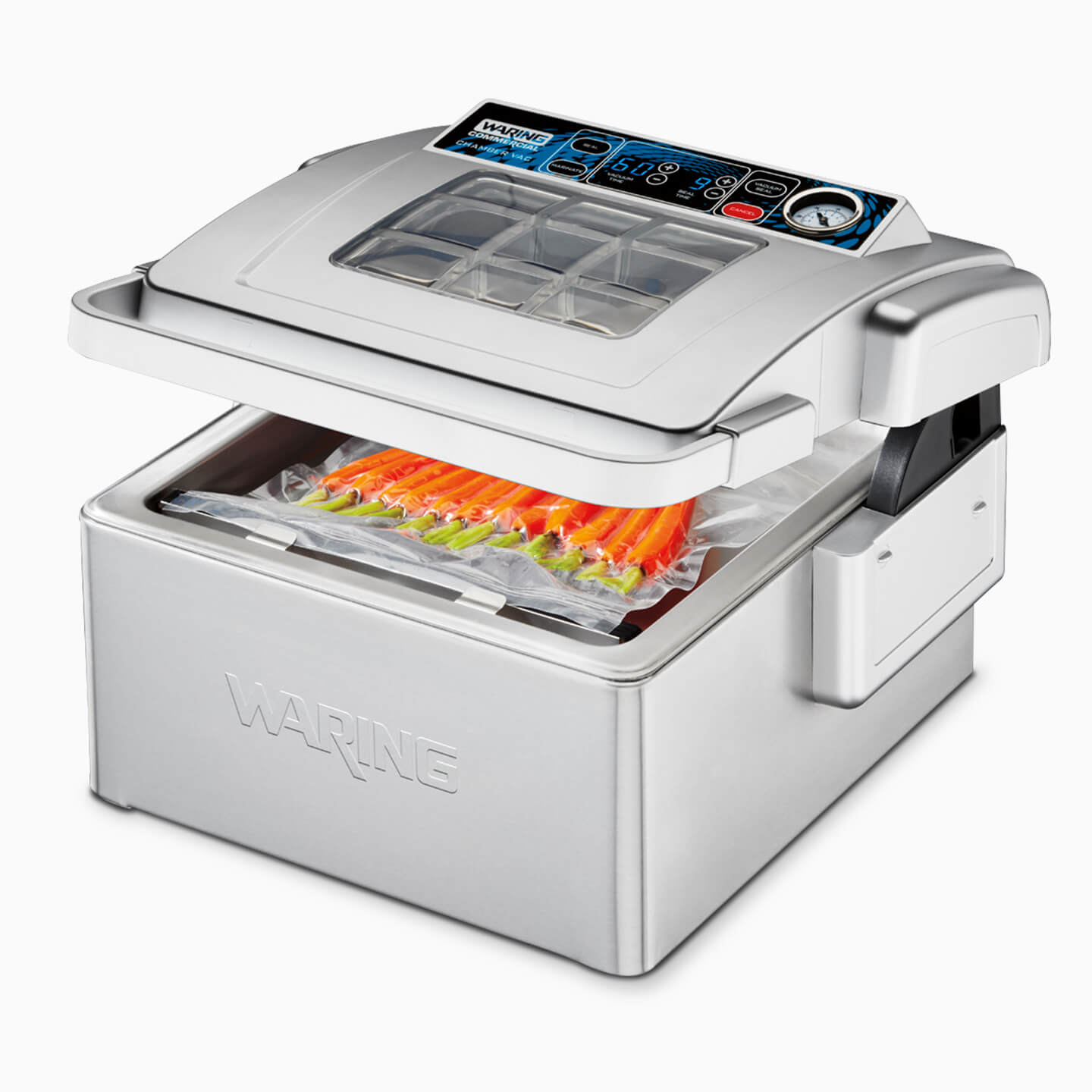
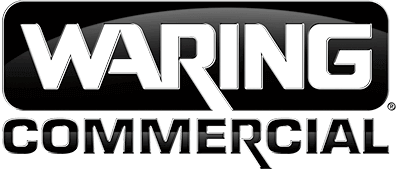

The innovation of Sous Vide – Kang's food world